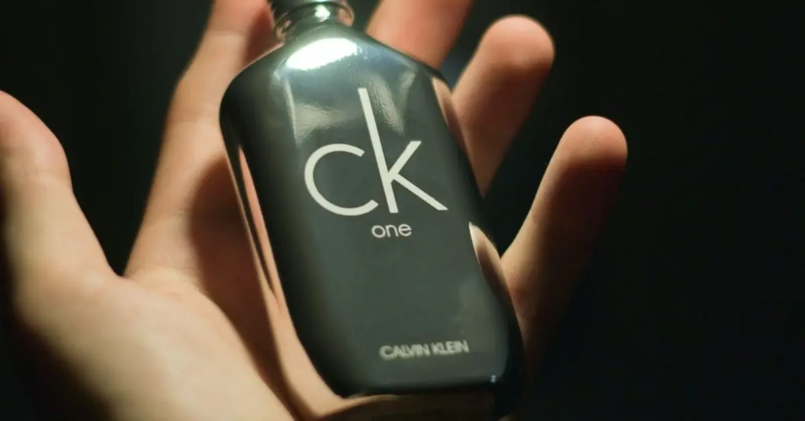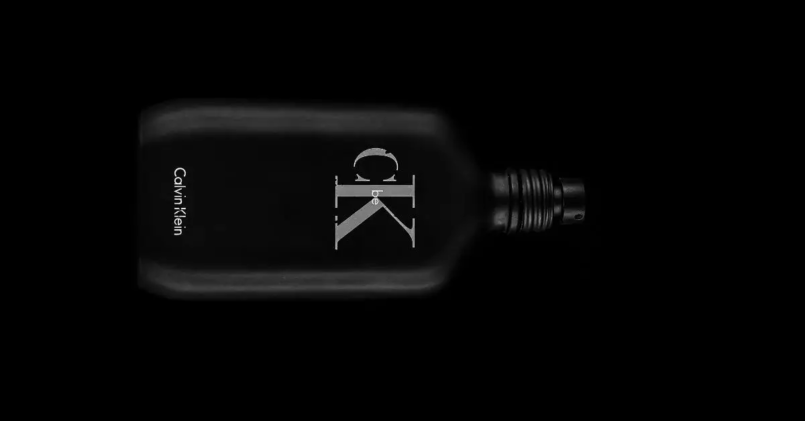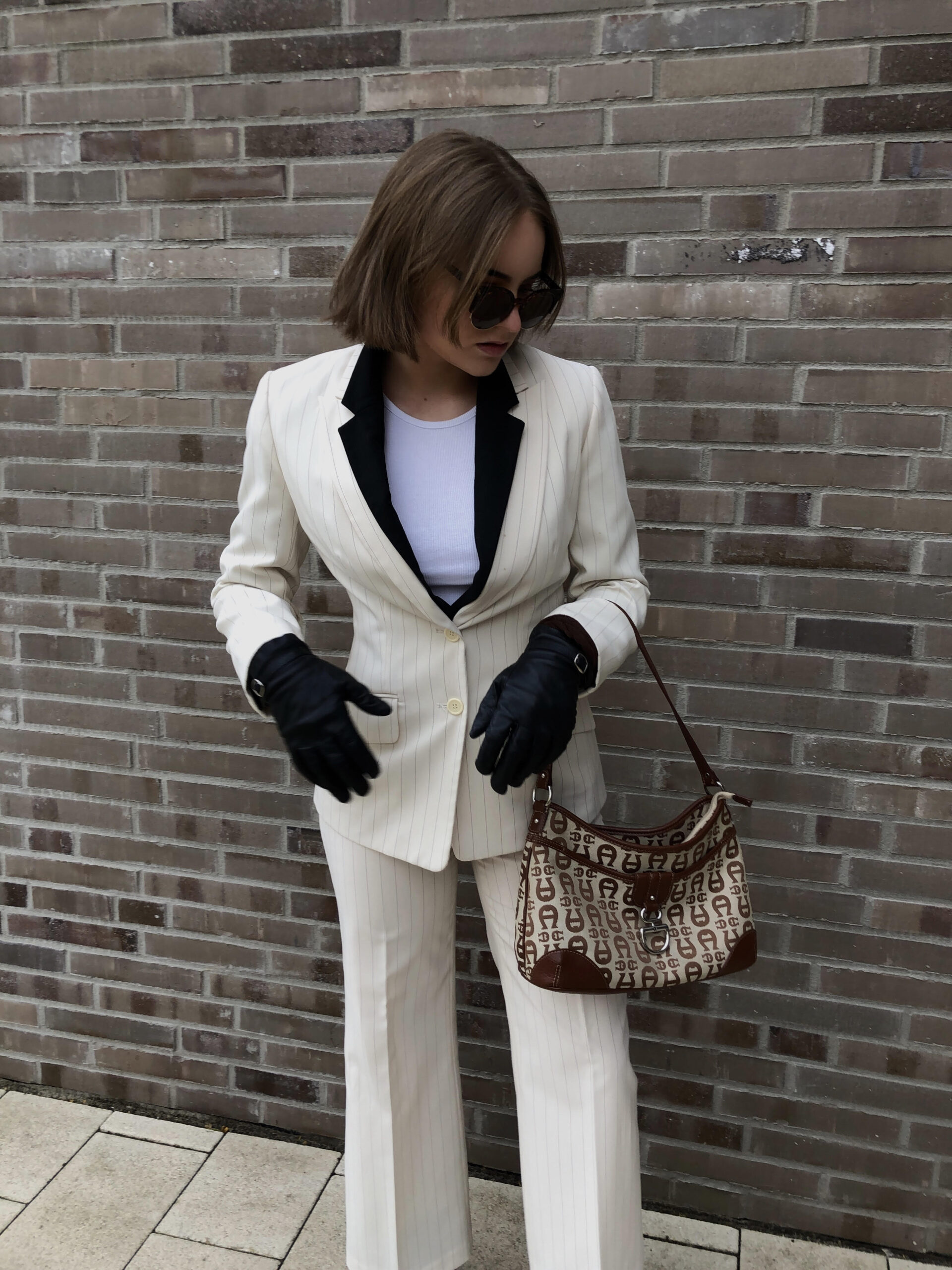For enthusiasts of classic American fashion labels, the “Tommy Hilfiger versus Calvin Klein” discussion is a common theme. Both brands have made substantial contributions to worldwide fashion, with a diverse selection of chic and fashionable items tailored to individual styles and tastes. In this article, we take a closer look at the history, design approaches, and unique styles of these two leading fashion houses, giving a comprehensive comparison to assist you in determining which brand best suits your needs.
Tommy Hilfiger vs Calvin Klein: In-Depth Comparison
Brand Histories
Tommy Hilfiger and Calvin Klein are two iconic American fashion brands that have significantly impacted the industry. Both companies have interesting histories that showcase their journey toward becoming world-renowned labels.
Tommy Hilfiger was founded in 1985 by Thomas Jacob Hilfiger, who started his career as a freelance designer after setting up his first business, People’s Place, in his New York hometown at 18. This early venture, however, did not last long, as it went bankrupt in 1977. Undeterred, Hilfiger went on to work for several popular brands before eventually launching his label. The brand became an instant success in the 1990s, gaining a reputation for its preppy, all-American style and attracting a youthful audience. Tommy Hilfiger is known for its casual wear, semi-luxury materials, and iconic red, white, and blue logo. The brand later expanded to include denim, sportswear, footwear, and accessories.
On the other hand, Calvin Klein was established in 1968 by Calvin Klein and his childhood friend, Barry Schwartz. Initially, the fashion house focused on women’s coats and dresses. However, soon after starting, the brand diversified into other apparel lines, including the iconic underwear collection, jeans, and casual wear. Calvin Klein’s minimalist approach to design, combined with the use of sexuality in its advertising campaigns, played a significant role in making the brand a household name. Over the years, the label has maintained its status as an influential force in fashion and expanded its offerings to include fragrances, watches, and eyewear.
Both brands have experienced their fair share of ups and downs over the years, but they have managed to maintain a strong presence in the market. Tommy Hilfiger has implemented various fashion branding strategies in different countries, while Calvin Klein has mainly focused on its brand personalization to stay relevant in today’s competitive fashion landscape.
In summary, while having distinct brand identities, Tommy Hilfiger and Calvin Klein have both successfully solidified their positions as iconic American fashion labels. With unique design philosophies and growth strategies, these two brands have navigated the fashion industry’s challenges and continue establishing their legacies.
Design and Style
When it comes to the design and style of Calvin Klein and Tommy Hilfiger, there are distinct differences between the two brands that set them apart. While both are renowned for their unique designs and styles, they cater to different preferences and tastes in the fashion world.
Calvin Klein’s designs are typically minimalist, sleek, and modern. The brand is highly regarded for its elegant and sophisticated approach to fashion, often focusing on clean lines and simple patterns. The color palette used in Calvin Klein’s clothing is generally more muted, with a preference for monochromatic or neutral tones.
In contrast, Tommy Hilfiger’s design philosophy revolves around a more preppy, casual, and classic American style. The brand is known for its bold colors, eye-catching patterns, and intense use of iconic logos. In addition, Tommy Hilfiger gravitates towards nautical themes and often incorporates stripes and other geometric patterns into its designs.
When examining their product offerings, it becomes even more evident how each brand has carved out its niche. Calvin Klein is highly regarded for its underwear and lingerie collections, which exemplify its minimalistic and refined aesthetic. On the other hand, Tommy Hilfiger’s signature line of polo shirts and denim pieces solidify its position as an all-American, casual brand.
Calvin Klein vs Tommy Hilfiger: Product Offerings

Tommy Hilfiger and Calvin Klein are both renowned for their extensive product offerings. In this section, we will provide an insightful comparison of the product lines offered by both brands, focusing on their clothing, accessories, and footwear.
Tommy Hilfiger is known for its classic, preppy, and sporty fashion that caters to various age groups and styles. Their range includes casual wear, sportswear, formal wear, and a more upscale line known as Tommy Hilfiger Collection. They also offer a wide selection of accessories and footwear, such as bags, belts, and shoes.
On the other hand, Calvin Klein is famous for its minimalistic and sophisticated designs, offering modern and fashionable clothing for both men and women. Their offerings can be divided into Calvin Klein and Calvin Klein Jeans. They also have a strong presence in the underwear and swimwear market, which has become one of the brand’s main focus areas.
Here’s a brief overview of the product categories offered by each brand:
| Tommy Hilfiger | Calvin Klein |
|---|---|
|
|
Marketing Strategies
Calvin Klein and Tommy Hilfiger, both well-known fashion brands, have different marketing strategies contributing to their industry success. Let’s examine how they approach advertising, celebrity endorsements, and digital presence, among other elements.
Advertising: Calvin Klein is famous for its provocative and minimalist advertising campaigns, often featuring black and white photography and focusing on the brand’s logo. This approach has consistently generated buzz and attention throughout the years, solidifying the brand’s image as sophisticated and edgy. On the other hand, Tommy Hilfiger’s advertising often has a more vibrant and colorful aesthetic, emphasizing the brand’s all-American, preppy style.
Celebrity Endorsements: Both brands have a strong history of collaborating with celebrities to boost their appeal. Calvin Klein is known for enlisting some of the biggest names in entertainment, such as Mark Wahlberg and, more recently, celebrities like Justin Bieber and Kendall Jenner, to endorse their products. Tommy Hilfiger has also leveraged star power for their campaigns, partnering with icons like Beyoncé and collaborating with contemporary stars like Gigi Hadid for capsule collections.
Digital Presence: In today’s digital age, a robust online presence is vital for fashion brands. Calvin Klein and Tommy Hilfiger have embraced social media and e-commerce platforms to connect with their audiences.
For example, Calvin Klein’s Instagram account showcases its latest collections, collaborations, and advertisements while providing followers with interactive content like polls and Q&A sessions. Similarly, Tommy Hilfiger’s online presence is strong, emphasizing influencer partnerships, user-generated content, and behind-the-scenes looks at fashion shows and events.
Moreover, both brands have developed user-friendly e-commerce sites and mobile apps, making it easier for consumers to browse and shop from the convenience of their devices.
Brand Partnerships and Collaborations: Partnering with other brands and designers can significantly impact a brand’s image and appeal. For example, Calvin Klein’s partnership with designer Raf Simons garnered much attention and helped create buzz around their collections. Tommy Hilfiger’s collaborations with Gigi Hadid and Zendaya illustrate how innovative partnerships can drive excitement and increase visibility.
In conclusion, the marketing strategies of Calvin Klein and Tommy Hilfiger showcase the brands’ distinct approaches to advertising, celebrity endorsements, digital presence, and collaborations. While each brand caters to different tastes and aesthetics, their marketing efforts have undoubtedly helped them secure their spots as leading fashion brands in a competitive industry.
Tommy Hilfiger or Calvin Klein: Celebrity Endorsements

Calvin Klein and Tommy Hilfiger have a long history of collaborating with prominent celebrities to drive consumer engagement and endorsement.
In the case of Calvin Klein, the brand has successfully enlisted the help of various A-listers over the years, from Mark Wahlberg in the early 1990s to more recent endorsers like Shawn Mendes and Zendaya. Calvin Klein has also tapped into the growing influence of K-pop by featuring Blackpink’s Jennie Kim in their campaigns, showcasing the brand’s awareness of global trends.
On the other hand, Tommy Hilfiger has built a reputation for its all-American appeal and strong connections with the music and entertainment industries. The brand has collaborated with countless celebrities, such as Britney Spears, Aaliyah, and most notably, Tommy’s ongoing partnership with supermodel Gigi Hadid.
Beyond these collaborations, both brands consciously try to align themselves with high-profile ambassadors, often featured in thought-provoking and innovative marketing campaigns. How do these notable partnerships translate into brand perception and success? Let’s take a closer look at celebrity endorsements’ impact on the brands’ appeal and reach.
By partnering with celebrated personalities, Calvin Klein and Tommy Hilfiger gain instant recognition and heightened exposure, drawing attention from their endorsers’ substantial fan bases. This mutually beneficial relationship allows the brand and the celebrity to leverage each other’s status and reach new audiences, driving sales and expanding their influence.
Moreover, celebrity endorsements also serve as a powerful tool for reinforcing the brands’ image and messaging. For instance, Calvin Klein’s choice of endorsers often conveys a sense of boldness and confidence, while Tommy Hilfiger’s partnerships often exude a more classic, timeless charm. As a result, consumers can easily associate these traits with the respective brands and feel a greater connection to them.
Price Comparison
When comparing the prices of Tommy Hilfiger and Calvin Klein products, it is essential to consider the traits of each brand. While both labels offer premium clothing and accessories, the focus on the target market and style influences the pricing of their merchandise.
Tommy Hilfiger is known for its classic, preppy style with a touch of modernity. Although not particularly cheap, the prices of their products are relatively reasonable for their target audiences, which range from young adults to middle-aged professionals. For instance, you can expect to find shirts and tops from around $40 to $100, depending on the item and collection.
On the other hand, Calvin Klein is inclined towards sleek, minimalist designs. This focus is also reflected in their pricing, with Calvin Klein often being more expensive than its counterpart. Their customers are mainly young professionals and fashion-forward individuals looking for a sophisticated, upscale wardrobe. A Calvin Klein shirt usually starts at $50 and can go up to $200 or more, justifying the higher price with its refined appearance and brand reputation.
However, both brands periodically offer discounts, promotions, and special deals that significantly lower the costs of their products. Hence, watching for such opportunities allows savvy shoppers to purchase these high-quality products at a more affordable price.
Target Audiences

When it comes to the target audiences of Calvin Klein and Tommy Hilfiger, both brands have established a unique positioning in the market. By understanding their respective target demographics, we can further appreciate the differences between these two iconic brands.
Calvin Klein, known for its minimalist and sophisticated designs, appeals to a more mature and high-end customer base. The brand’s marketing campaigns often center around bold, provocative imagery that targets fashion-forward individuals who prioritize style and luxury. Additionally, Calvin Klein has successfully ventured into the fragrance and underwear markets, further solidifying its presence as a leader in the fashion industry.
Tommy Hilfiger, on the other hand, captures the essence of classic American fashion, blending preppy and sportswear styles. This timeless aesthetic has attracted a broader and younger audience, making the brand more accessible and appealing to a wider range of customers. The brand’s use of bright, bold colors and a casual, comfortable style has positioned Tommy Hilfiger as a go-to brand for everyday wear.
Given their respective styles and positioning, it’s evident that Calvin Klein and Tommy Hilfiger have different age groups in mind. While Calvin Klein aims for an older, more sophisticated clientele, Tommy Hilfiger caters more to younger consumers looking for trendy, casual wear. The question remains: what is the best option for you, based on your personal preferences and style?
When it comes to the price point, Calvin Klein is often perceived as a more premium option, while Tommy Hilfiger offers a slightly more affordable range for its customers. This difference in pricing further emphasizes the distinctions between the two brands’ target audiences. Does your budget influence your decision or do you prioritize the brand’s style and image above their prices?
The strategic use of celebrity endorsements also plays a role in appealing to their respective target audiences. In recent years, Calvin Klein has collaborated with notable names such as Justin Bieber, Kendall Jenner, and Shawn Mendes, whereas Tommy Hilfiger has partnered with popular celebrities like Gigi Hadid, Zendaya, and Lewis Hamilton. Which celebrities hold more influence on your fashion choices?
Global Expansion and Presence
Both Calvin Klein and Tommy Hilfiger are well-known global brands that have successfully expanded their presence to various countries worldwide.
Calvin Klein, founded in 1968 New York City, is known for its modern and minimalist design aesthetic. Initially focused on women’s clothing, the brand expanded into other product lines, such as men’s wear, accessories, and fragrances. Today, Calvin Klein operates more than 10,000 sales points worldwide and has become synonymous with high-quality and fashionable products.
Tommy Hilfiger, founded in 1985, has a different design philosophy – focused on creating classic, preppy, and sports-inspired clothing. The brand also expanded its offerings to include various products, such as accessories and fragrances. Tommy Hilfiger boasts a global presence with flagship stores, outlets, and e-commerce platforms in more than 100 countries.
Both brands have embraced digital retailing and e-commerce to expand their global footprint. Partnerships with renowned online retail platforms and the creation of user-friendly, visually appealing websites have made it easier for customers worldwide to purchase their products.
Beyond retail presence, Calvin Klein and Tommy Hilfiger engage in various marketing and advertising campaigns to maintain a strong brand identity. Collaborations with celebrities, fashion events, and social media campaigns have significantly contributed to their global brand recognition.
How do these brands compare when it comes to global expansion and presence? The table below offers a summary:
| Calvin Klein | Tommy Hilfiger | |
|---|---|---|
| Year Founded | 1968 | 1985 |
| Design Aesthetic | Modern & Minimalist | Preppy & Sports-inspired |
| Global Presence | Over 10,000 Points of Sales | Flagship Stores, Outlets, and E-commerce in more than 100 countries |
Social and Environmental Responsibility
Regarding social and environmental responsibility, both Calvin Klein and Tommy Hilfiger have tried to address these crucial issues. Let’s dive into their initiatives and compare their approach.
Calvin Klein has implemented various practices toward environmental sustainability, such as setting targets on reducing greenhouse gas emissions, using renewable energy, and working towards circular fashion. They are also part of the PVH Corp’s corporate responsibility strategy focusing on sustainable materials and water conservation.
On the social responsibility front, Calvin Klein prioritizes fair labor practices, working conditions, and ensuring the safety of workers by adhering to global standards. They also emphasize diversity, equity, and inclusion within their workforce and promote community engagement through philanthropic efforts.
Tommy Hilfiger, also a part of PVH Corp’s corporate responsibility strategy, shares similar goals and initiatives. They strongly support circular fashion, aiming to make their products fully recyclable by 2030, and are invested in sustainable materials, such as organic cotton or recycled polyester.
In addition, Tommy Hilfiger focuses on energy efficiency and carbon reduction throughout its operations. They also address water use, striving for sustainable water management in their supply chain.
Socially, Tommy Hilfiger supports workers’ rights and safety through the implementation of strong labor standards. They provide resources and training to ensure an inclusive, diverse, and equitable work environment. Their philanthropy involves empowering communities and individuals through their various projects, such as the TommyCares program.
FAQ:
What is the difference between Calvin Klein and Tommy Hilfiger?
Calvin Klein is known for its minimalist aesthetic and provocative imagery, offering a clean and effortless style with just a touch of edginess. Tommy Hilfiger, on the other hand, is a mid-range brand that offers a variety of unique style designs with a retro-inspired, relaxed, and laid-back vibe.
Is CK Calvin Klein a luxury brand?
CK Calvin Klein is not considered a luxury brand, but rather a mid-range designer brand that offers stylish and high-quality clothing and accessories at a reasonable price point.
Is Tommy Hilfiger a luxurious brand?
Tommy Hilfiger is not considered a luxurious brand but rather a mid-range designer brand that offers a variety of unique style designs with a retro-inspired, relaxed, and laid-back vibe at an affordable price point.
What brand is equivalent to Calvin Klein?
Ralph Lauren is a brand that is often compared to Calvin Klein due to its similar aesthetic and focus on classic, timeless designs. Both brands offer high-quality clothing and accessories at a mid-range price point.
Is Tommy Hilfiger a low end brand?
No, Tommy Hilfiger is not considered a low-end brand but rather a mid-range designer brand that offers a variety of unique style designs with a retro-inspired, relaxed, and laid-back vibe at an affordable price point.
Does Tommy Hilfiger own Calvin Klein?
No, Tommy Hilfiger does not own Calvin Klein. Both brands are owned by PVH Corp, a publicly traded American clothing company that also owns other fashion brands such as Izod, Van Heusen, and Arrow.
Why do people buy Calvin Klein?
People buy Calvin Klein for its minimalist aesthetic, high-quality materials, and timeless designs that offer a clean and effortless style with just a touch of edginess. The brand is also known for its provocative imagery and striking designs, which appeal to customers looking for a bold and unique fashion statement.
Which is better Zara or Tommy Hilfiger?
It depends on personal preference. Zara is known for its fast fashion and trendy designs, while Tommy Hilfiger offers a variety of unique style designs with a retro-inspired, relaxed, and laid-back vibe. Customers may prefer one brand over the other based on their personal style and preferences.
Is Calvin Klein or Tommy Hilfiger more expensive?
Calvin Klein generally has a higher price point than Tommy Hilfiger, reflecting its positioning as a more premium brand.
Is Calvin Klein a luxury brand?
Calvin Klein is considered a premium brand, but not a traditional luxury brand like Gucci or Prada.
Are Calvin Klein and Tommy Hilfiger the same?
Calvin Klein and Tommy Hilfiger are distinct brands, each with its own style and heritage, though both are owned by PVH Corp.
Tommy Hilfiger vs Calvin Klein underwear
In the underwear category, Calvin Klein is famed for its iconic, minimalist design, while Tommy Hilfiger offers a more preppy, Americana vibe.
Is Tommy Hilfiger a luxury brand?
Tommy Hilfiger is not classified as a luxury brand, but rather a premium lifestyle brand known for its classic American style.
Is Calvin Klein expensive?
Calvin Klein is considered expensive relative to average clothing prices, but not excessively so when compared to high-end designer labels.
Disclosure: We only recommend products we would use ourselves and all opinions expressed here are our own. This post may contain affiliate links that we may earn a small commission at no additional cost to you.
If you liked this blog article about the comparison: Tommy Hilfiger vs Calvin Klein, don’t forget to follow us on Pinterest so you don’t miss any more fashion and beauty news.





